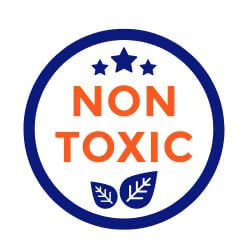Nursery Furniture: Cleaning and Care Guidelines
Got stain on your nursery furniture? Don’t worry, here we have compiled a few recommendations on how to clean your nursery furniture based on the materials.
Important note: Always read and follow the cleaning and care instructions provided with your furniture. If no instructions are provided, try to identify the material of the stained part and clean accordingly.

General notes on cleaning:
- Avoid using harsh chemicals.
- Always search for material-specific cleaners.
- Do a spot test first before using a cleaner for the first time.
Spot test is done to make sure the cleaner is safe to use on the furniture.
Steps for spot test:
Use a cotton ball or a small piece of cloth, dip or apply the cleaner on the cloth/cotton ball and wipe it on a hidden area of the furniture. Next, use a microfiber cloth to dry the spot. Inspect whether the spot changes in color or damage in any way. If the spot looks alright, it means the cleaner is safe to use.
- Use a lint roller to remove a little bit of dust or small crumbs easily.
- When using cleaners, do spot clean. This means that you only clean the affected spot to avoid the stain from becoming messier or spread to other parts.
🪑WOODEN FURNITURE
Wooden furniture is easy to clean as the wood itself is durable and not so delicate. However, adequate cleaning is still required to maintain the good look and extend life span.
Cleaning and care recommendations:
General: Use oil-based cleaners such as mineral or vegetable oil-based. Avoid water-based cleaners as they can be too strong for the surface. Whenever possible, use a cleaner that is specifically made of wood.
Use microfiber cloth to avoid catching splinters. Usage of other types of cloths can leave behind lint that will affect the appearance.
When using cleaners, apply the cleaner on the cloth first before wiping on the wood surface. Do not apply on the wood directly. Wipe the surface with long, clean strokes. Follow the direction of the wood grain if possible. Wipe until no left-over cleaners remain. Don’t forget to apply the final wipe with a different dry cloth.
Dust, dry crumbs, loose particles: Remove dust regularly because dust can pile up if left untouched for a long time and can affect the surface of the wood. Use feather duster or microfiber cloth to remove dust. Don’t forget to dust away all the little nooks and crannies as well.
If the dust already turns into grime, you can clean it using a soft cloth or sponge dipped in a solution containing a mix of water and a few drops of mild soap. Dry the parts with a dry cloth afterwards.
Stains and spills: Clean immediately with a soft cloth or a paper towel. For tougher stains and spill, dampen the cloth and wring it dry before wiping the stain. Use a different cloth, microfiber type recommended, to dry the surface and make it shine again.
Routine care: To make the surface shine and harder for dust to stick on, you can condition the surface with wax or wood butter. This can be done every couple of months.
🧣FABRIC AND MICROFIBER FURNITURE
Fabric and microfiber furniture usually come with a cleaning code tag. Check the code carefully. Here are the codes and their meanings.
W – Means water. You can wash your upholsterers with water and soap or water-based cleaners.
S – Means solvent. You can only clean your fabric furniture using organic solvent. The usual materials with an “S” code are rayon, cotton, linen, silk, and wool.
S/W – Means water or solvent. You can clean your furniture with either water-based or solvent cleaners.
X – Means you cannot use any cleaning reagent. You can only use vacuum or dry brush to clean the fabric.
Cleaning and care recommendations:
Other than the ‘X’ code, you can clean your fabric surface as follows:
Dust, dry crumbs, loose particles: Remove these using a dry brush, then vacuum the surface. Don’t forget to vacuum all removable parts as well.
Stains and spills: Blot immediately with a soft cloth or a paper towel. For tougher stains and spill, use a suitable cleaner according to the cleaning code. Apply the cleaner to a cloth and blot the stained spot. Be sure to test on a hidden spot first to see if the cleaner can ruin the surface. Blot dry the surface with another dry cloth after all stain is removed.
Routine care: Remove dust as frequently as needed. To remove odor from fabric, try to sprinkle some baking soda on the surface.
🌟LEATHER FURNITURE
Leather surface might seem delicate, but it is relatively easy to clean as well.
Cleaning and care recommendations:
Dust, dry crumbs, loose particles: Remove them using a vacuum. Don’t forget to vacuum all removable parts and crevices as well.
Stains and spill: Wipe immediately with a microfiber cloth. For tougher stains and spills, use a suitable leather cleaner. Apply the cleaner on a soft damp cloth and wipe a small hidden spot first to see if the cleaner ruined the surface. If it is OK, wipe the leather surface, one small area at a time. Use another damp cloth to wipe away the remaining cleaner and finally wipe with a dry soft cloth.
You can also use a solution made of equal parts of water and vinegar. Use a microfiber cloth dipped in this solution to wipe stain. Be sure to wring the cloth and remove as much moisture as possible.
Routine care: To maintain the softness of the leather, maintain its appearance, and harder for dust to stick on, you can condition the surface with leather protection cream or conditioner. This can be done every couple of months.




